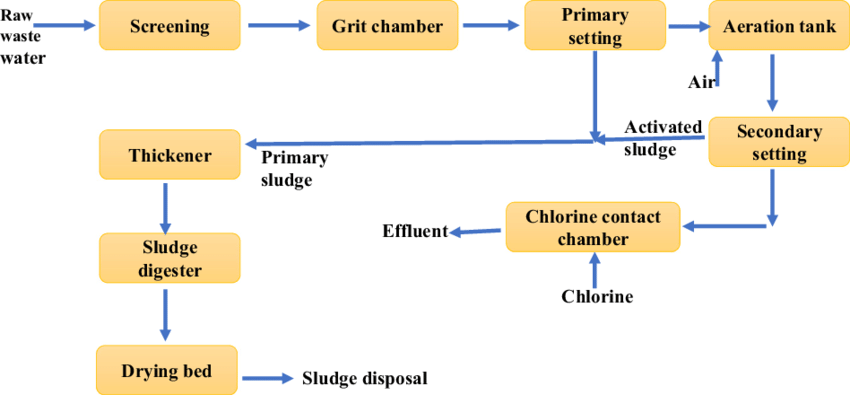The Single Strategy To Use For Reclaim Waste
The Single Strategy To Use For Reclaim Waste
Blog Article
The Single Strategy To Use For Reclaim Waste
Table of ContentsReclaim Waste for BeginnersThe Greatest Guide To Reclaim WasteReclaim Waste - TruthsSee This Report about Reclaim WasteSee This Report on Reclaim Waste
Explore the kinds, occurrences, and kinds of fluid waste. Domestic sewer waste refers to the waste and items from a residential sewage-disposal tank. This sort of waste is produced by humans in residences, schools, and various other buildings. This only consists of septic storage tanks that have a drainpipe field. The correct management and disposal of domestic sewer waste need fluid waste to be transferred to a sewer treatment plant where the appropriate methods and equipment are put on detoxify and deal with waste.
Business waste frequently consists of possible hazards, such as flammable products or a combination of liquid and strong waste products, and needs an advanced and detailed disposal process. The disposal of industrial waste generally entails the filtration of waste prior to transport to guarantee risk-free and correct disposal. Hazardous waste is created from byproducts and overflow of industrial procedures and manufacturing.
This sort of waste can not make use of the same sewage administration transport or procedures as septic or business fluids. The commercial waste monitoring procedure needs the examination and screening of fluid waste prior to it undertakes the disposal procedure (liquid waste removal melbourne). Overflow waste is the liquid waste that comes from overflow and excess stormwater in extremely inhabited areas or cities
Runoff waste can trigger contamination and flooding if not managed appropriately. Making sure proper waste management can protect against catastrophes and decrease ecological damage.
Reclaim Waste Things To Know Before You Buy
Contact PROS Solutions today to learn regarding our waste management and disposal solutions and the proper means to take care of the fluid waste you create.
(https://www.goodreads.com/user/show/183557660-leon-aube)Do you know what takes place to your water when you end, flush the commode or drain the washing equipment? No? Well, it's worth knowing. This supposed 'wastewater' is not only a vital source but, after therapy, will be released to our land, rivers or the ocean. Used water from toilets, showers, bathrooms, kitchen sinks, washings and industrial procedures is referred to as wastewater.

water utilized to cool down machinery or clean plant and tools). Stormwater, a type of wastewater, is overflow that moves from agricultural and metropolitan locations such as roofing systems, parks, yards, roadways, paths and rain gutters right into stormwater drains pipes, after rain. Stormwater streams neglected directly to local creeks or rivers, ultimately reaching the sea.
The 2-Minute Rule for Reclaim Waste
In Queensland, most wastewater is dealt with at sewer treatment plants. Wastewater is delivered from residential or industrial sites via a system of sewage systems and pump terminals, understood as sewerage reticulation, to a sewage therapy plant.
The Division of Natural Resources advises local governments about handling, operating and maintaining sewerage systems and treatment plants. In unsewered areas, neighborhood governments may need homeowners to install individual or home sewage treatment systems to treat residential wastewater from commodes, kitchens, bathrooms and washings. The Department of Natural Resources authorizes making use of household systems when they are confirmed to be efficient.
In some new communities, treatment of some stormwater to get rid of trash, sand and crushed rock has started using gross toxin catches. Wastewater treatment occurs in 4 stages: Gets rid of solid issue.
Wastewater then flows right into big tanks where solids resolve and are eliminated as sludge. Oil and scum are skimmed from the surface area. Uses small living microorganisms knows as micro-organisms to break down and remove staying liquified wastes and great particles. Micro-organisms and wastes are integrated in the sludge. Gets rid of nitrogen and phosphorus nutrients that could trigger algal blossoms in our rivers and intimidate water life.
All about Reclaim Waste
Nutrient elimination is not readily available in all sewer therapy plants because it requires expensive specialised equipment. It is ending up being extra usual in Queensland. Clear liquid effluent produced after therapy might still contain disease-causing micro-organisms. If this effluent is launched right into rivers such as rivers or the sea, the micro-organisms will eventually pass away out.

This normally indicates wastewater has to be dealt with or pollutants eliminated before it can be discharged to waterways. The majority of wastewater streams into the sewage system. Under the Act, city governments carry out approvals and permits for ecologically relevant tasks (Ages) entailing wastewater launches that might have a local influence. The department administers approvals and permits to Ages involving wastewater launches that might have a local or statewide effect.
Reclaim Waste - The Facts
Otherwise, examples are considered research laboratory analysis. Typically several examinations are required to develop the levels of each of the different toxins such as oils, heavy metals read and pesticides in water. Tracking supplies factual info about water high quality and can verify that permit conditions are being satisfied. The information acquired via monitoring supplies the basis for making water top quality choices.
Report this page